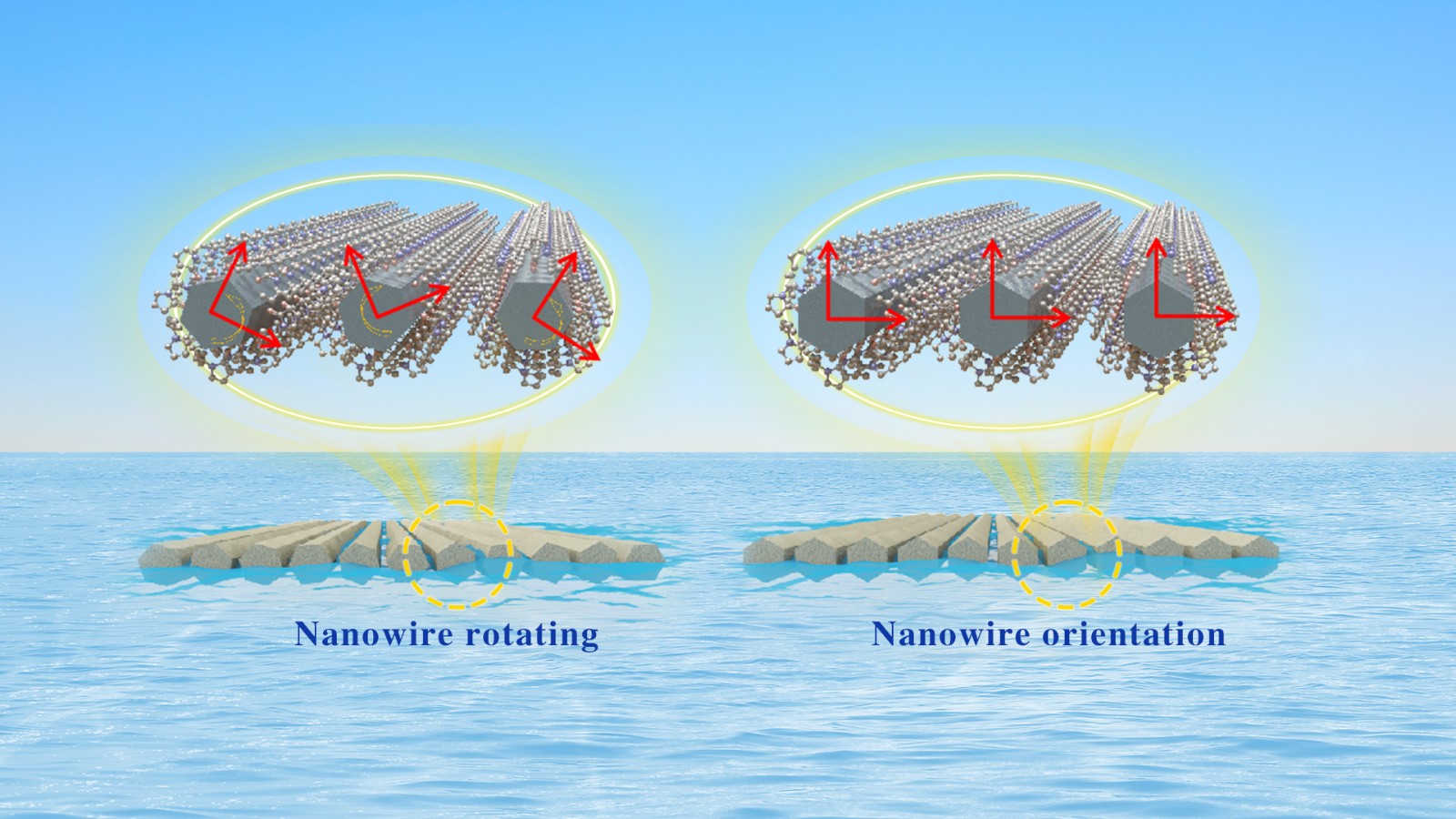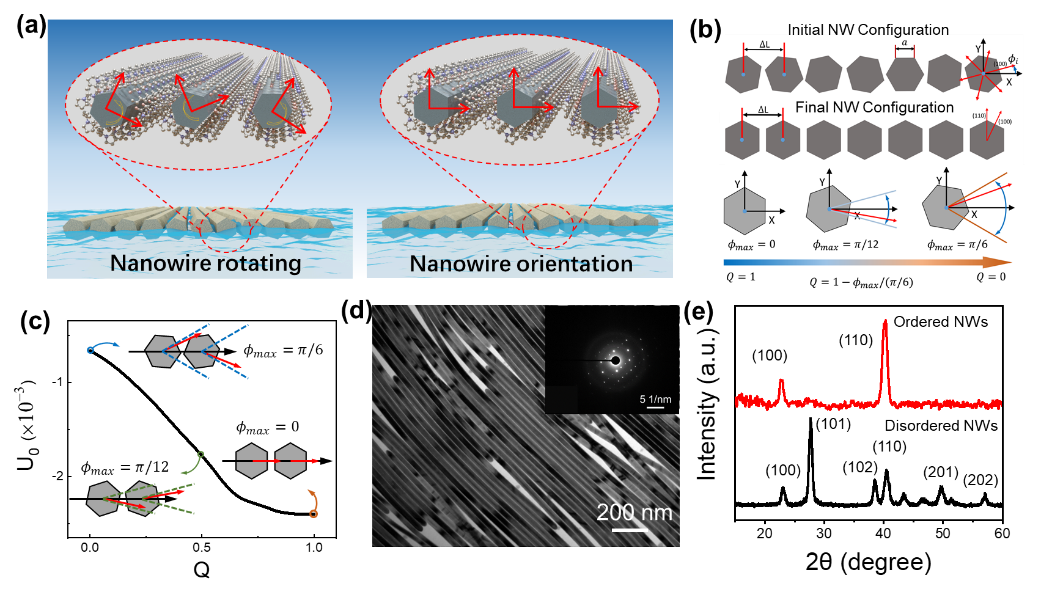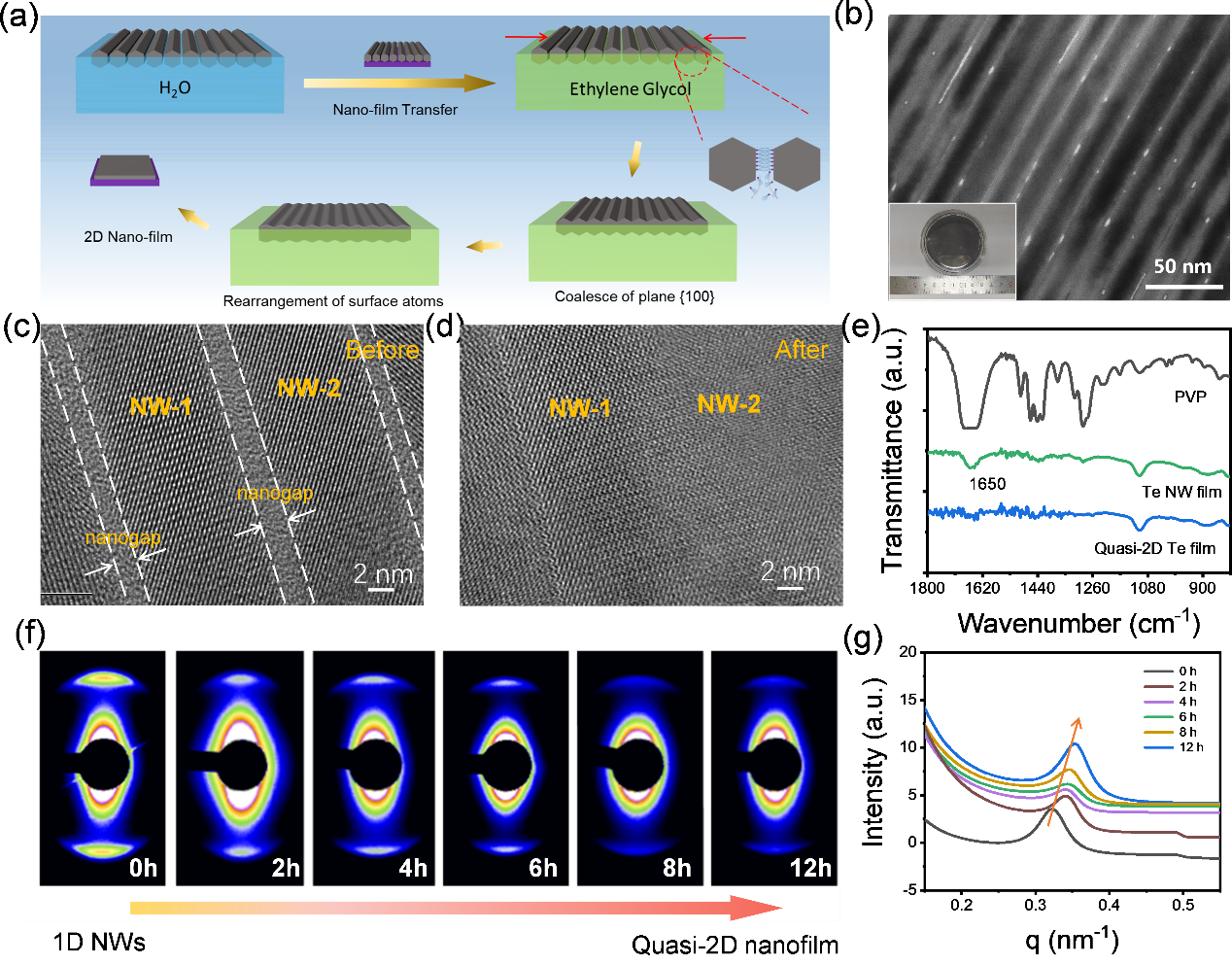Researchers collaborate to make breakthrough in new path for assembled nanofilm synthesis
2024-06-24
Thin film fabrication is of great importance in modern engineering. Among various bottom-up film fabrication strategies, interfacial assembly of nano-building blocks holds great promise in constructing large-scale aligned monolayer thin film, which leads to emergent or enhanced collective properties compared to individual building blocks.
To date, the liquid-air interface has been proven to be a universal platform that successfully realizes the self-assembly or transformation from different nano-building blocks to a series of nano-films, such as the self-assembled nanostructure film, inorganic material film, and polymerization film. As for 1D nanostructure, the interfacial self-assembly causes the morphology orientation, which effectively achieves anisotropic electrical, thermal, and optical conduction. However, issues such as defects between each nano-building block, the crystal orientation, and homogeneity constrain the application of ordered film.

Chair Professor Shu-Hong Yu from the Departments of Chemistry and Materials Science and Engineering (MSE) and Assistant Professor Zhen He from the Department of MSE at the Southern University of Science and Technology (SUSTech) have recently collaborated to report a new strategy for in-situ interface assembly-induced synthesis. They achieved the transformation of ordered nanowire thin films from one-dimensional to quasi-two-dimensional structures. The dynamic transformation mechanism and interface synthesis kinetics were revealed, providing a new path for the construction of ordered structural thin films with anisotropic nanoelements.
Their related work, entitled “Interfacial Assembly Induced In-Situ Transformation from Aligned 1D Nanowires to Quasi-2D Nanofilms”, has been published in the Journal of the American Chemical Society (JACS).
The researchers reported an in-situ interfacial assembly-induced interfacial synthesis (IAIS) strategy for the controlled preparation of centimeter-scale quasi-2D Te nano-film from the orientation attaching of aligned 1D Te NW. This result reveals that the ordered crystal orientation and the desorbed surfactant are crucial for the 1D to 2D transformation process. Importantly, this is the first report on the in-situ IAIS strategy from assembled Te NW film to quasi-2D Te nano-film with eliminated nano-gap.

Figure 1. The interface orientation process of nanowires
For the ordering process of crystal orientation, they found that the ensemble-averaged interaction energy U0 of the NW systems decreases monotonously as the order parameter Q increases. Therefore, NWs with the face-to-face ordered arrangement (Q = 1) lead to the minimum U0, indicating the steady state of NW systems (Figure 1).
For the attaching process, the NW periods gradually decrease as the interfacial synthesis reaction proceeds, which was further verified by the SAXS results (Figure 2). Besides, the molecular dynamics simulation and Monte Carlo simulation revealed the attaching process between NWs and the rearrangement of surface atoms.

Figure 2. The interface-attaching process of nanowires
As a result, a quasi-2D nano-film with a well-crystalline and large-scale area can be obtained, showing better electronic transmission than 1D NW film. The researchers demonstrated that this in-situ IAIS strategy allows the orientation attachment of 1D nano-building blocks, while the theoretical sampling and simulation confirmed this transformation from 1D to 2D.
These findings provide critical insights into the interfacial synthesis kinetics of anisotropic nano-building blocks, facilitating the fabrication of customized and centimeter-scale film. Furthermore, it will open a new way to explore other-oriented attachment processes occurring on different interfaces. These interfacial platform technologies are promising in the manufacturing of functional thin films with well-defined properties for diverse applications.
Chair Professor Shu-Hong Yu and Assistant Professor Zhen He from SUSTech, along with Professor Jian-Wei Liu and Associate Professor Hui-Jun Jiang from the University of Science and Technology of China (USTC), are the co-corresponding authors of the paper.
This study was supported by the SUSTech Guangming Advanced Research Institute, Shenzhen Science Foundation, New Cornerstone Science Foundation, National Natural Science Foundation of China (NSFC), and the Start-Up Fund of SUSTech.
Paper link: https://doi.org/10.1021/jacs.4c03730




